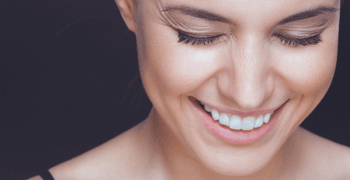
Acne scarring: how can I treat it?
4th June 2018
Acne can be embarrassing, lifestyle limiting, and need a complete medical and aesthetic treatment journey to tackle. There is sadly no cure for acne, but it can be effectively managed and controlled. Beating it can be the best feeling in the world, but what if we encounter acne scarring? Scarring detracts from our well-earned victory but don’t worry, R3 Aesthetics in Milton Keynes can help.
Acne scarring occurs after a more aggressive breakout or if you have agitated or picked at your spots. We’d always recommend not worrying the skin by squeezing the spots, as your skin is already in trauma and it will lead to scarring. After an aggressive bout of acne, your skin will rush to heal the sores. It does this by over-producing collagen, the main protein in forming new skin, resulting in it quickly closing the wound but leaving behind a dimpled or bumpy scar. This can also result in darkened or lightened patches of skin pigmentation because of the rapid production of new skin cells.
It’s perfectly natural to not like the appearance of your skin after you have finally conquered acne. Scarring feels like another permanent problem that your acne previously represented, but it doesn’t have to be permanent anymore.
Treating acne scarring harnesses the same power in the body that created them in the first place. However, it’s done so in a far more precision-controlled way.
Microneedling
Microneedling uses tiny needles to penetrate the skin’s surface, creating small openings no bigger than your pores. These tiny pinpricks create a controlled wound in the treated area, stimulating the body’s natural healing processes. Our skin will begin to produce fresh collagen and new skin cells, healing and sloughing off the damaged cells. The collagen production during this treatment is far more controlled and a lot softer than those that occur when the spot is healing. This is partially due to the skin’s own reaction, because there is no oil or debris causing infection and inflammation, and partially down to the precise nature of treatment. By encouraging a positive skin cell turnover, the body heals the acne scarring from the inside out, pushing out the scar tissue cells until their appearance is softened.
Chemical peels
Chemical peels are a form of medical exfoliation for the skin. Much like microneedling, they create a controlled wound on the superficial layers of the skin. These damaged, dead, and dying skin cells react to the peel by drying out and literally peeling, revealing a fresh layer of skin underneath. This accelerated skin cell turnover prompts the body into producing fresh collagen and a layer of skin to replace that which was lost. This means that chemical peels can successfully treat active acne, balancing the oils in the skin, as well as darkened skin tone scarring and dimpled or bumpy acne scarring.
Microdermabrasion
Breaking the name of this treatment down reveals its nature: micro (precise) derm (skin) abrasion (wearing away). This procedure exfoliates old skin cells away using a mechanical handheld treatment device, the resulting debris then removed by an accompanying vacuum-like piece. This lightly exfoliates the superficial layer of skin to reveal a fresh, new layer beneath and reintroduces a natural glow. It’s the ideal treatment for dark spots and uneven pigmented, wearing away the discoloured skin cells to reveal a more even tone beneath.
Acne scarring, as we well know, makes us feel self-conscious about our skin. Even those who are inclined to wear makeup often feel that they can’t cover the uneven surface of their skin well enough to hide it. R3 Aesthetics in Milton Keynes will help you solve your active acne and acne scarring in a treatment plan tailored personally to you. Speak to a friendly member of staff on 01908 749633 or book your complimentary consultation today.
